“I look at my role as being a friend of Canberra Hospital, I can bring some pleasure and happiness sometimes to people who are really in difficult times in their lives.”
With backing music from a Bluetooth speaker, Sayer croons his way around the cancer wards, making a human connection with everyone he comes across.

Canberra Region Cancer Centre Operations Manager Caroline McIntyre says Sayer’s visits are typically kept a surprise for patients and staff.
“He’s always come in so discreetly,” she says.
“Normally it’s just very quiet, he comes up in the back lift and says hello to literally everybody.
“Some of them are doing it tough, and to have a little bit of joy and light – it really gives them a lift.
“What makes me happy is to see people getting chemo on their feet dancing.”
Jamming with Jimi Hendrix, Countdown and the Troubadour
Originally a graphic designer by trade, English-born Leo Sayer rose to pop prominence in London in the late 1960s, as a singer-songwriter – and was soon adopted by Australia as an honorary son after his first tour here in 1974.
He went on to become an Australian citizen in 2009.
Sayer was a regular on ABC TV’s Countdown during the 70s and 80s, performing chart-toppers like “You Make Me Feel Like Dancing”, “When I Need You”, “More Than I Could Say” and “Orchard Road”.

He blushingly admits they were wild days – when he didn’t always live up to his “good-guy” public persona.
“It was mad, I mean, Top of the Pops in England, Countdown over here,” he says.
“You were mobbed by the fans, I remember being dragged out of a limousine the first tour that I came here, and then speaking to crazy people like Molly Meldrum on TV and trying to sort of like take it all in.”
It seems hard to believe – the petite, well-spoken singer, with a mane of curly hair that inspired changing his name from Gerard to Leo – beating off mobs of screaming fangirls.
Sayer circulated in superstar company, becoming close friends with former Beatles George Harrison and Paul McCartney, collaborating with Roger Daltrey of The Who, and even sharing a sly cigarette or two with John Lennon and Yoko Ono who had a flat above his design studio.
“I met Jimi Hendrix right at the start of his career. I actually jammed with him, playing the harmonica, and him playing the guitar,” he says.
Recalling his 1975 opening night at the famous Troubadour Club in Los Angeles, he looked up to see an intimidating line-up of fans in the front row.

“It was David Bowie, Elton John, and ‘The Fonz’ [Henry Winkler].”
Alongside them: John Cleese, Mick Jagger, Bernie Taupin, and comedian Marty Feldman.
“We never thought it would last, we were adapting to things around us, writing songs about things that are around us,” he says.
“And we thought they were only for our generation — so the amazing thing is my music’s become like a fine wine, where you lay it down and years later, it becomes a collector’s item.
“We’re in an age where the music that I make, young kids are actually latching onto it now, and they’re finding that that generation and that style of music we made is as current now as anything.”
Sayer’s health battles, still spreading hope at 76
Leo Sayer says his hospital charity work caps off a career dedicated to providing joy through music.
“It’s a nice piece of synchronicity really, because I was born in the grounds of a hospital in Shoreham by Sea in Sussex, near Brighton in England,” Mr Sayer said.
“I suppose I’ve always felt comfortable in hospitals and being around hospitals.
“Growing up, my dad was a hospital engineer, Mum was a nurse, my sister was a matron.”
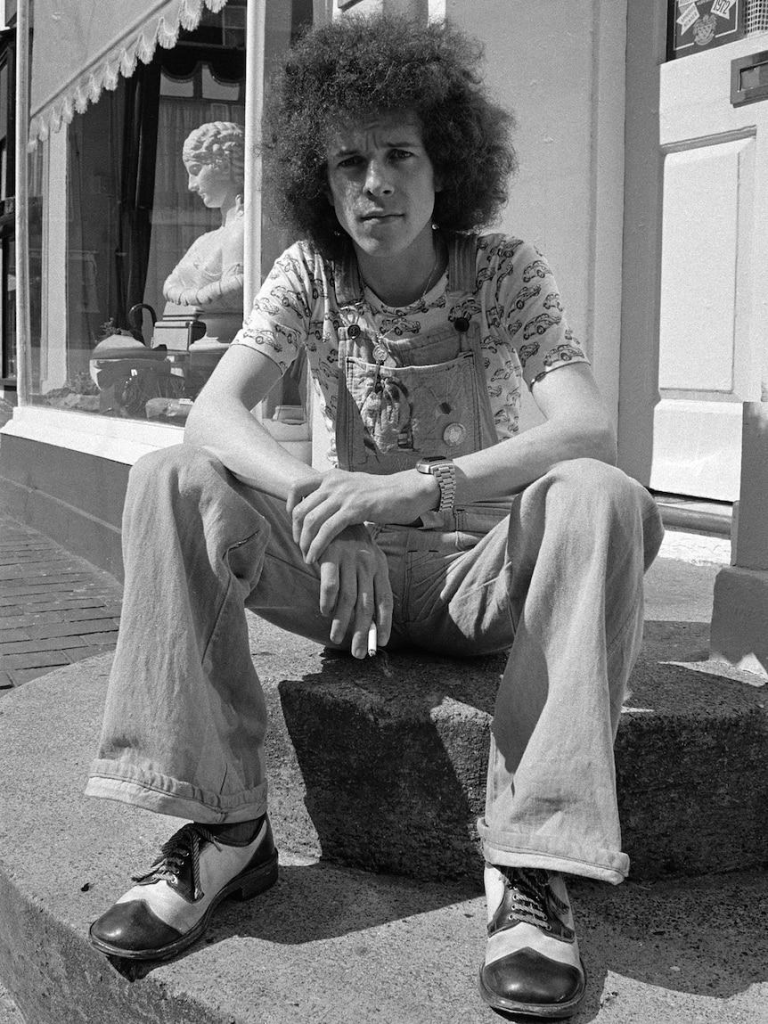
Sayer has health struggles of his own, including three stents in his heart, which help him have a genuine connection to the hospital patients he entertains.
“[My music] is providing something that isn’t taking away from any of the treatment that’s going on. It’s providing something that’s just putting a smile on peoples’ faces.
“Music is communication and that’s what this is all about, we’re communicating, we’re making people feel better.
“We’re not healing people with music, but we are making them feel better about their healing.
“To sell out Canberra Hospital will do me fine.”
Minha vizinha ficava pendurando a calcinha bem na frente da janela do meu filho – então eu dei uma lição de verdade nela
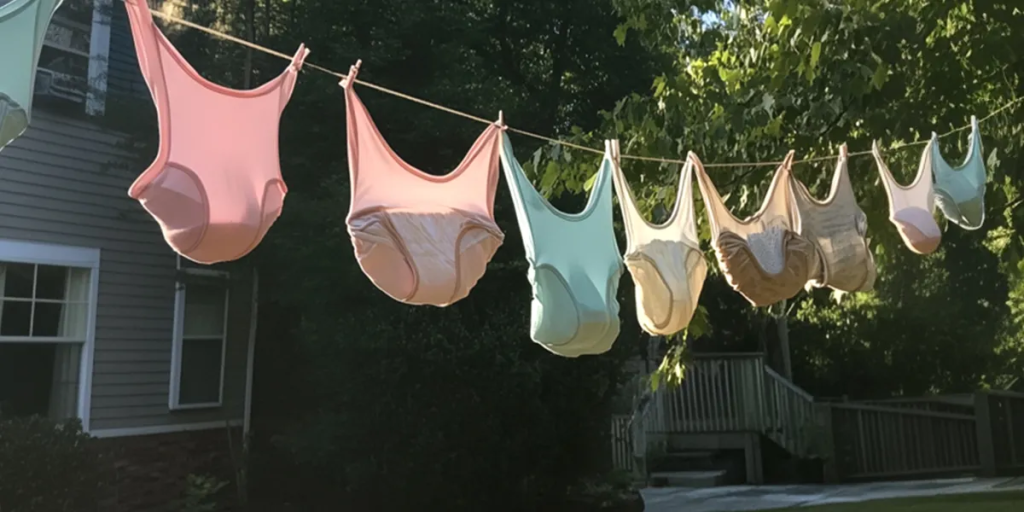
As calcinhas da minha vizinha roubaram os holofotes bem do lado de fora da janela do meu filho de 8 anos por semanas. Quando ele inocentemente perguntou se as calcinhas dela eram estilingues, eu sabia que era hora de acabar com esse desfile de calcinhas e dar a ela uma lição séria sobre etiqueta de lavanderia.
Ah, subúrbio! Onde a grama é sempre mais verde do outro lado, principalmente porque o sistema de irrigação do seu vizinho é melhor que o seu. Foi lá que eu, Kristie, esposa de Thompson, decidi plantar minhas raízes com meu filho de 8 anos, Jake. A vida era tão suave quanto uma testa recém-pintada de botox até que nossa nova vizinha, Lisa, se mudou para a casa ao lado.

Vista de drone de um bairro pitoresco | Fonte: Unsplash
Começou numa terça-feira. Lembro porque era dia de lavar roupa, e eu estava dobrando uma montanha de minúsculas roupas íntimas de super-heróis, cortesia da mais nova obsessão de Jake.
Olhando pela janela do quarto dele, quase engasguei com meu café. Ali, balançando na brisa como a bandeira mais inapropriada do mundo, estava uma calcinha de renda rosa-choque.
E eles não estavam sozinhos. Ah, não, eles tinham amigos — um arco-íris inteiro de cuecas dançando ao vento, bem na frente da janela do meu filho.

Calcinhas penduradas para secar no varal | Fonte: Midjourney
“Santo guacamole”, murmurei, deixando cair uma cueca do Batman. “Isso é um varal ou uma passarela da Victoria’s Secret?”
A voz de Jake ecoou atrás de mim: “Mãe, por que a Sra. Lisa deixou a calcinha do lado de fora?”
Meu rosto queimou mais quente do que meu secador com defeito. “Uh, querida. A Sra. Lisa só… realmente gosta de ar fresco. Por que não fechamos essas cortinas, hein? Dê um pouco de privacidade para a lavanderia.”

Um menino curioso | Fonte: Midjourney
“Mas mãe”, Jake persistiu, seus olhos arregalados com curiosidade inocente, “se a calcinha da Sra. Lisa gosta de ar fresco, a minha não deveria ficar lá fora também? Talvez minha calcinha do Hulk pudesse fazer amizade com a rosa dela!”
Eu sufoquei uma risada que ameaçava se transformar em um soluço histérico. “Querida, sua calcinha é… tímida. Ela prefere ficar dentro de casa, onde é aconchegante.”
Enquanto eu acompanhava Jake para fora, não pude deixar de pensar: “Bem-vinda à vizinhança, Kristie. Espero que você tenha trazido seu senso de humor e um par de cortinas resistentes.”

Uma mulher rindo | Fonte: Midjourney
Os dias se transformaram em semanas, e a exibição da roupa suja de Lisa se tornou tão regular quanto meu café da manhã e tão bem-vinda quanto uma xícara de café gelado com um pouco de leite coalhado.
Todos os dias, uma nova variedade de calcinhas aparecia na janela do meu filho e, todos os dias, eu me pegava brincando de “proteger os olhos da criança”.

Uma variedade de calcinhas em um varal | Fonte: Midjourney
Uma tarde, enquanto eu preparava um lanche na cozinha, Jake entrou correndo, com o rosto marcado por confusão e excitação, o que fez meu senso materno formigar de pavor.
“Mãe”, ele começou, naquele tom que sempre precedia uma pergunta para a qual eu não estava preparado, “por que a Sra. Lisa tem tantas calcinhas de cores diferentes? E por que algumas delas são tão pequenas? Com cordões? Elas são para o hamster de estimação dela?”

Uma mulher boquiaberta em choque | Fonte: Midjourney
Quase deixei cair a faca que estava usando para espalhar manteiga de amendoim, imaginando a reação de Lisa à sugestão de que suas peças delicadas eram do tamanho de roedores.
“Bem, querida”, gaguejei, ganhando tempo, “cada um tem preferências diferentes para suas roupas. Até mesmo aquelas que não vemos normalmente.”
Jake assentiu sabiamente como se eu tivesse transmitido alguma grande sabedoria. “Então, é como eu gosto da minha roupa íntima de super-herói, mas adulta? A Sra. Lisa combate o crime à noite? É por isso que a roupa íntima dela é tão pequena? Para aerodinâmica?”

Um menino sorrindo | Fonte: Midjourney
Engasguei com o ar, presa entre o riso e o horror. “Uh, não exatamente, querida. A Sra. Lisa não é uma super-heroína. Ela é apenas muito confiante.”
“Oh,” Jake disse, parecendo levemente desapontado. Então seu rosto se iluminou novamente.
“Mas mãe, se a Sra. Lisa pode pendurar suas roupas íntimas do lado de fora, eu posso pendurar as minhas também? Aposto que minhas boxers do Capitão América ficariam superlegais balançando ao vento!”

Um garotinho alegre | Fonte: Midjourney
“Desculpe, amigo”, eu disse, bagunçando seu cabelo. “Sua cueca é especial. Ela precisa ficar escondida para, uh, proteger sua identidade secreta.”
Enquanto Jake assentia e mastigava seu lanche, olhei pela janela para a exibição de calcinhas coloridas de Lisa.
Isso não podia continuar. Era hora de bater um papo com nosso vizinho exibicionista. 😡

Uma mulher olhando pela janela | Fonte: Pexels
No dia seguinte, fui até a casa de Lisa.
Toquei a campainha, exibindo meu melhor sorriso de “vizinho preocupado”, o mesmo que uso quando digo à associação de moradores que “não, meus gnomos de jardim não são ofensivos, eles são excêntricos”.
Lisa respondeu, parecendo que tinha acabado de sair de um comercial de xampu.

Vista da porta da frente de uma casa | Fonte: Unsplash
“Ah, oi! Kristie, certo?” ela franziu a testa.
“É isso mesmo! Escute, Lisa, eu esperava que pudéssemos conversar sobre alguma coisa.”
Ela se encostou no batente da porta, sobrancelha erguida. “Oh? O que está pensando? Precisa de uma xícara de açúcar emprestada? Ou talvez uma xícara de confiança?” Ela olhou incisivamente para meu jeans de mãe e minha camiseta grande demais.

Uma mulher franzindo as sobrancelhas desagradavelmente | Fonte: Midjourney
Respirei fundo, lembrando a mim mesma que laranja de prisão não era minha cor. “É sobre sua roupa suja. Especificamente, onde você a pendura.”
As sobrancelhas perfeitamente depiladas de Lisa franziram. “Minha roupa para lavar? O que tem? É muito fashion para o bairro?”
“Bem, é que está bem na frente da janela do meu filho. A, hum, roupa íntima especialmente. É um pouco reveladora. Jake está começando a fazer perguntas. Ontem, ele perguntou se suas calcinhas eram estilingues.”

Uma mulher franzindo a testa | Fonte: Midjourney
“Oh, querida. São só roupas! Não é como se eu estivesse pendurando códigos de lançamento nuclear. Embora, entre você e eu, minha parte de baixo de biquíni com estampa de leopardo seja bem explosiva!”
Senti meu olho tremer. “Eu entendo, mas Jake tem apenas oito anos. Ele está curioso. Esta manhã, ele perguntou se podia pendurar sua cueca de Superman perto do seu, uh, ‘equipamento de combate ao crime’.”
“Bem, então, parece uma oportunidade perfeita para alguma educação. De nada! Estou praticamente administrando um serviço público aqui. E por que eu deveria me importar com seu filho? É meu quintal. Endureça-se!”
“Com licença?”

Uma mulher furiosa | Fonte: Midjourney
Lisa acenou com a mão desdenhosamente. “Escuta, se você está tão incomodada com algumas calcinhas, talvez você precise relaxar. É meu quintal, minhas regras. Lide com isso. Ou melhor ainda, compre uma calcinha mais fofa. Eu poderia te dar algumas dicas se você quiser.”
E com isso, ela bateu a porta na minha cara, me deixando ali de boca aberta, provavelmente pegando moscas.
Fiquei atordoado. “Ah, está ON”, murmurei, girando nos calcanhares. “Você quer jogar roupa suja? Jogo ligado, Lisa. Jogo. Ligado.” 😈

Uma mulher olhando para o lado | Fonte: Midjourney
Naquela noite, sentei-me na minha máquina de costura.
Metros do tecido mais chamativo e escaldante que eu pude encontrar estavam diante de mim. Era o tipo de tecido que provavelmente poderia ser visto do espaço e poderia atrair formas de vida alienígenas!
“Você acha que seus pequenos números rendados são algo para se ver, Lisa?”, murmurei, passando o tecido pela máquina. “Espere até você ver isso. ET vai ligar para casa sobre esses bebês.”
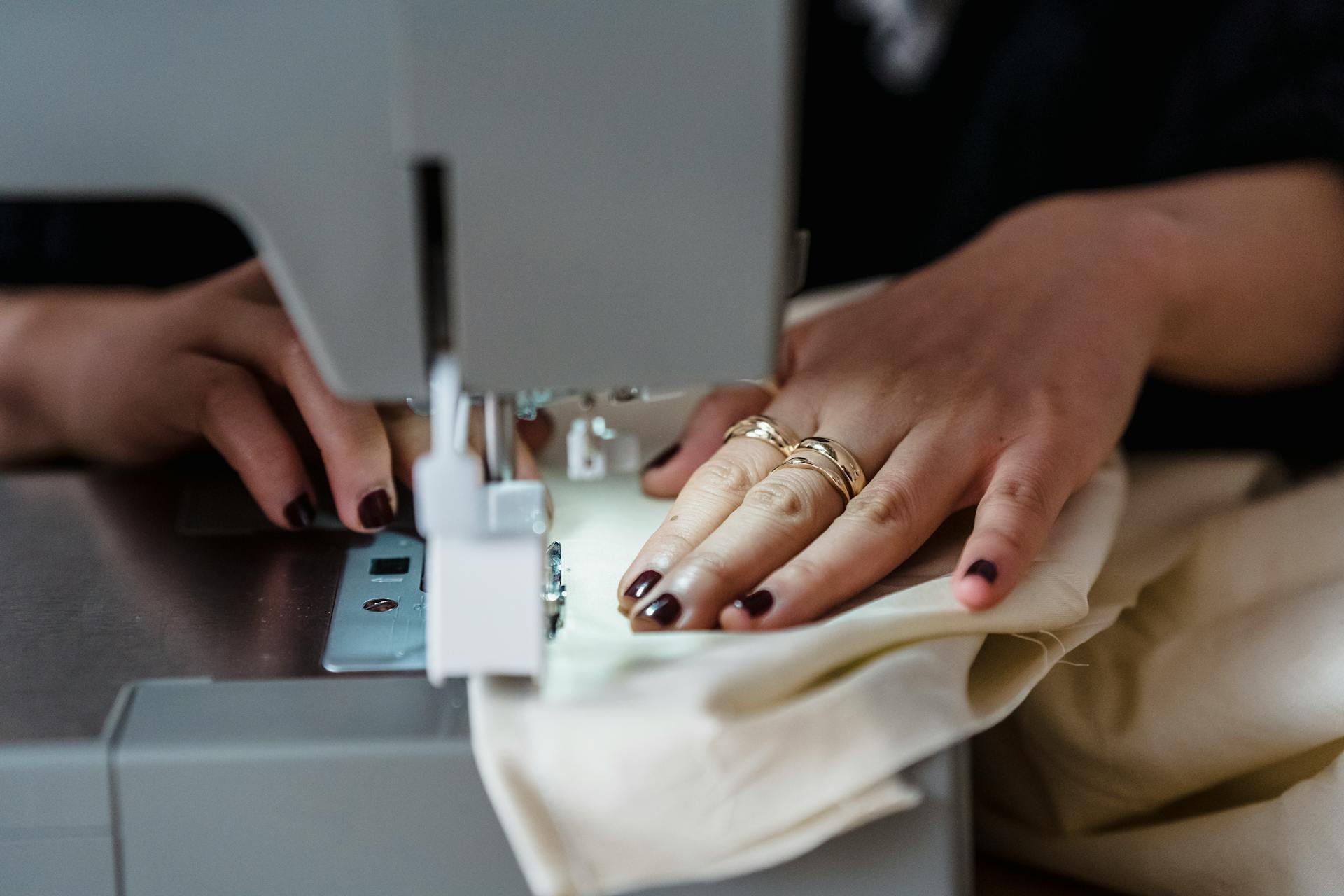
Uma mulher usando uma máquina de costura | Fonte: Pexels
Horas se passaram e, finalmente, minha obra-prima estava completa — o maior e mais detestável par de calcinhas de vovó do mundo. 🤣
Eles eram grandes o suficiente para serem usados como paraquedas, barulhentos o suficiente para serem vistos do espaço e pequenos o suficiente para provar meu ponto de vista.
Se a calcinha de Lisa era um sussurro, a minha era uma sirene de neblina em forma de tecido.

Vista lateral de uma mulher rindo | Fonte: Midjourney
Naquela tarde, assim que vi o carro de Lisa saindo da garagem, entrei em ação.
Com meu varal improvisado e minha calcinha gigante de flamingo pronta, corri pelos nossos gramados, escondendo-me atrás de arbustos e enfeites de jardim.
Com a costa limpa, pendurei minha criação bem na frente da janela da sala de estar de Lisa. Dando um passo para trás para admirar meu trabalho, não pude deixar de sorrir.

Um carro na garagem | Fonte: Unsplash
As enormes cuecas de flamingo balançavam majestosamente na brisa da tarde. Elas eram tão grandes que uma família de quatro provavelmente poderia usá-las como barraca para acampar.
“Tome isso, Lisa”, sussurrei, correndo de volta para casa. “Vamos ver se você gosta de provar seu próprio remédio. Espero que tenha trazido seus óculos de sol, porque está prestes a ficar CLARO na vizinhança.”
De volta à minha casa, posicionei-me perto da janela. Eu me senti como uma criança esperando o Papai Noel, exceto que, em vez de presentes, eu estava esperando o momento em que Lisa descobriria minha pequena surpresa.
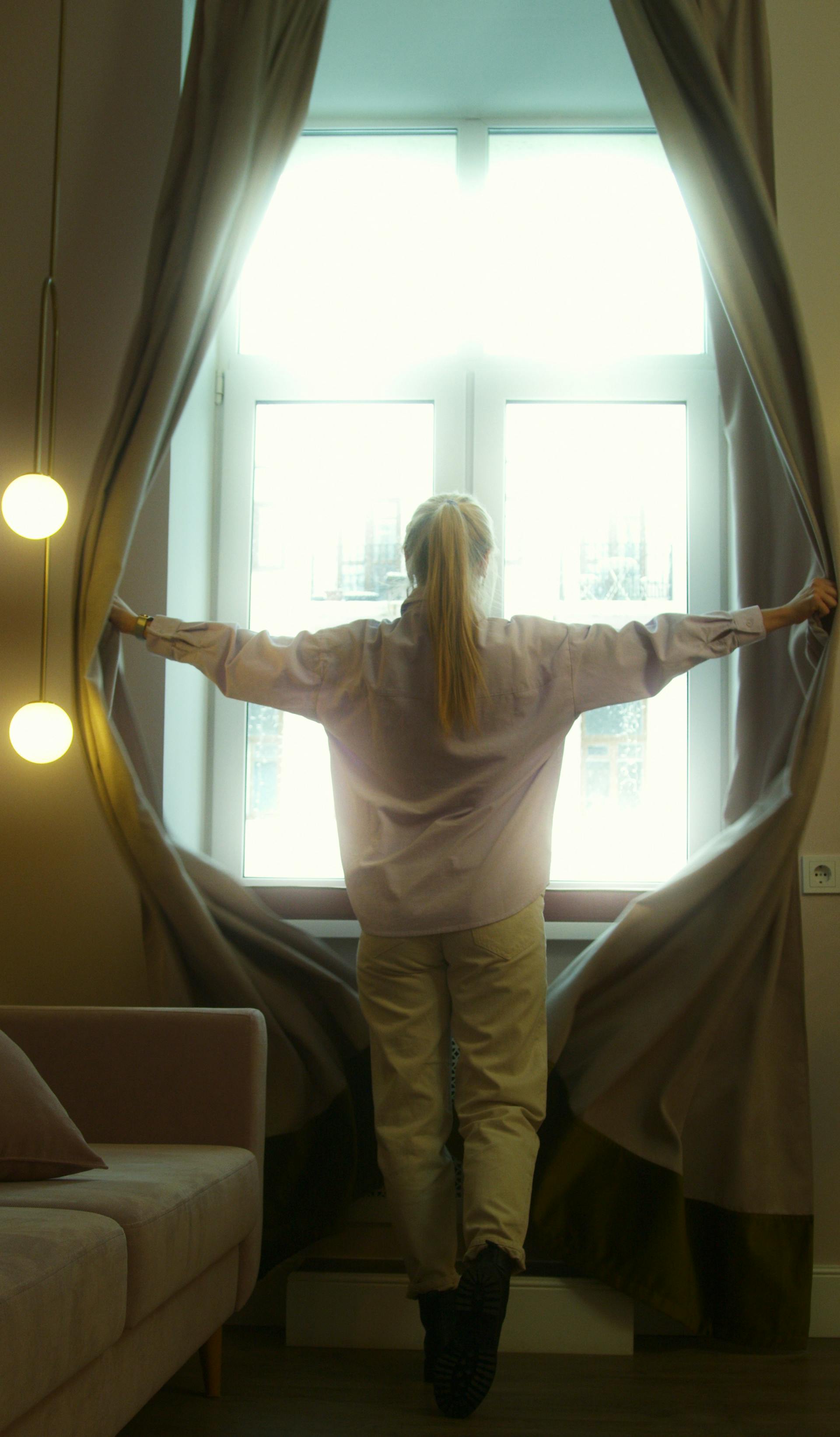
Uma mulher abrindo cortinas | Fonte: Pexels
Os minutos passavam como horas.
Enquanto eu me perguntava se Lisa havia decidido estender suas tarefas para umas férias surpresa, ouvi o som revelador do carro dela entrando na garagem.
Altura de começar.

Close-up de um carro preto | Fonte: Unsplash
Lisa saiu, braços cheios de sacolas de compras, e congelou. Seu queixo caiu tão rápido que pensei que ele fosse se soltar. As sacolas escorregaram de suas mãos, espalhando o conteúdo pela entrada da garagem.
Juro que vi uma calcinha de bolinhas rolando pelo gramado. Elegante, Lisa. 😏
“QUE DIABOS…??” ela gritou, alto o suficiente para toda a vizinhança ouvir. “Isso é um paraquedas? O circo veio para a cidade?”
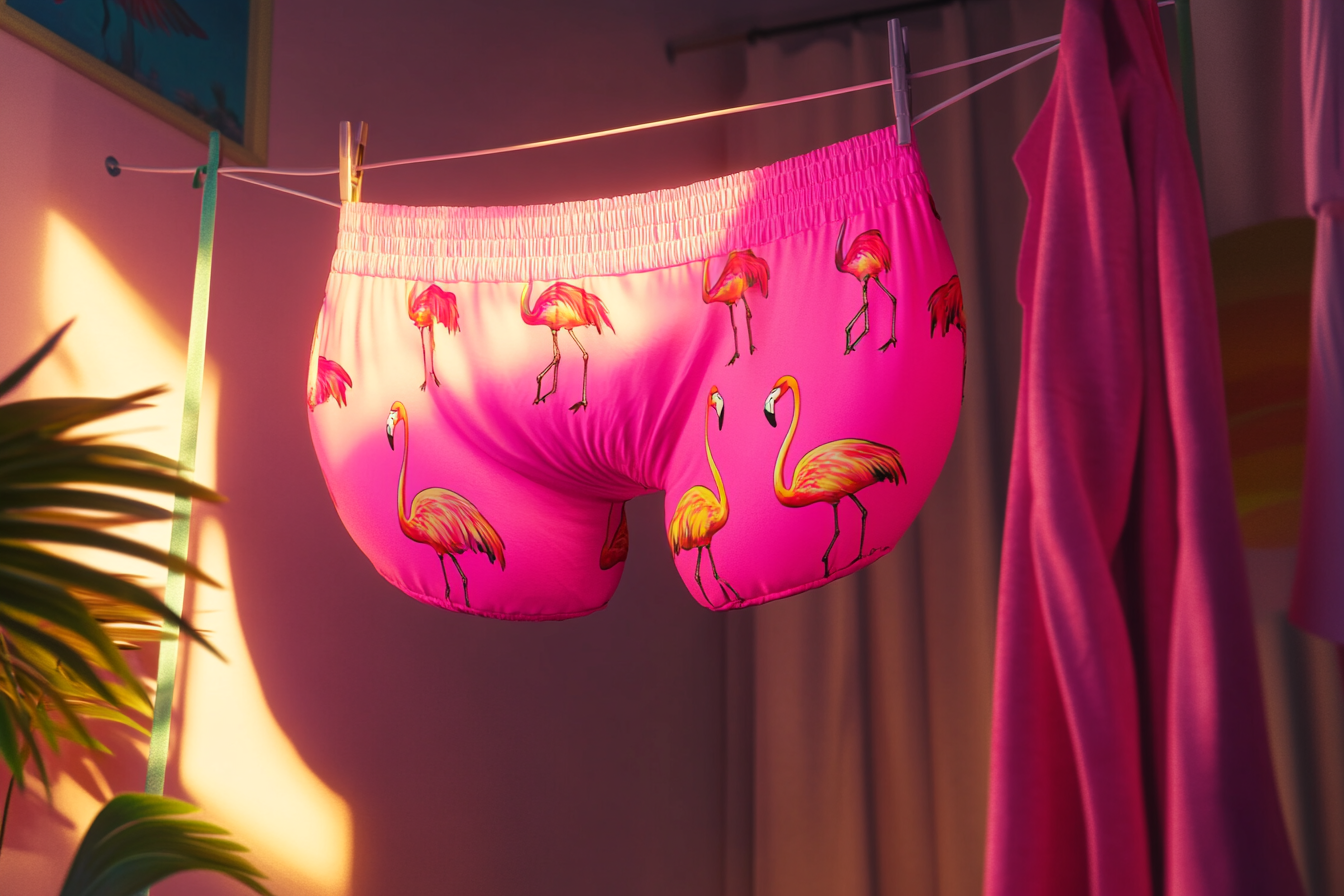
Um par de calcinhas rosa neon brilhantes em um varal | Fonte: Midjourney
Eu comecei a rir. Lágrimas escorriam pelo meu rosto enquanto eu observava Lisa irromper até as cuecas gigantes, puxando-as inutilmente. Era como assistir a um chihuahua tentando derrubar um dogue alemão.
Me recompondo, caminhei para fora. “Oh, oi Lisa! Fazendo alguma redecoração? Adorei o que você fez com o lugar. Muito vanguardista.”
Ela se virou para mim, o rosto tão rosa quanto a calcinha da minha criação. “Você! Você fez isso! O que há de errado com você? Você está tentando sinalizar aeronaves?”

Uma mulher irritada | Fonte: Midjourney
Dei de ombros. “Só pendurando roupa para lavar. Não é isso que os vizinhos fazem? Achei que estávamos começando uma tendência.”
“Isso não é roupa para lavar!” Lisa gritou, gesticulando freneticamente para as calcinhas. “Isso é… isso é…”
“Uma oportunidade de aprendizado?”, sugeri docemente. “Sabe, para as crianças da vizinhança. Jake estava muito curioso sobre a aerodinâmica das roupas íntimas. Achei que uma demonstração prática poderia ajudar.”
A boca de Lisa abriu e fechou como um peixe fora d’água. Finalmente, ela conseguiu balbuciar: “Leve. Isso. Abaixo.”

Uma mulher furiosa franzindo a testa | Fonte: Midjourney
Bati no meu queixo pensativamente. “Hmm, não sei. Eu meio que gosto da brisa que está pegando. Realmente areja as coisas, sabe? Além disso, acho que está aumentando o valor dos imóveis. Nada diz ‘bairro de classe’ como uma calcinha gigante e inovadora.”
Por um momento, pensei que Lisa poderia entrar em combustão espontânea. Então, para minha surpresa, seus ombros caíram. “Tudo bem”, ela disse entre dentes. “Você venceu. Vou mover minha roupa para lavar. Só… por favor, tire essa monstruosidade. Minhas retinas estão queimando.”
Eu ri, estendendo minha mão. “Fechado. Mas eu tenho que dizer, eu acho que flamingos são sua cor.”

Uma mulher rindo | Fonte: Midjourney
Enquanto nos apertávamos, não pude deixar de acrescentar: “A propósito, Lisa? Bem-vinda à vizinhança. Somos todos um pouco loucos aqui. Alguns de nós simplesmente escondem isso melhor do que outros.”
Daquele dia em diante, a roupa de Lisa desapareceu do varal em frente à janela de Jake. Ela nunca mais mencionou isso, e eu nunca mais tive que lidar com suas “lições de vida” também.
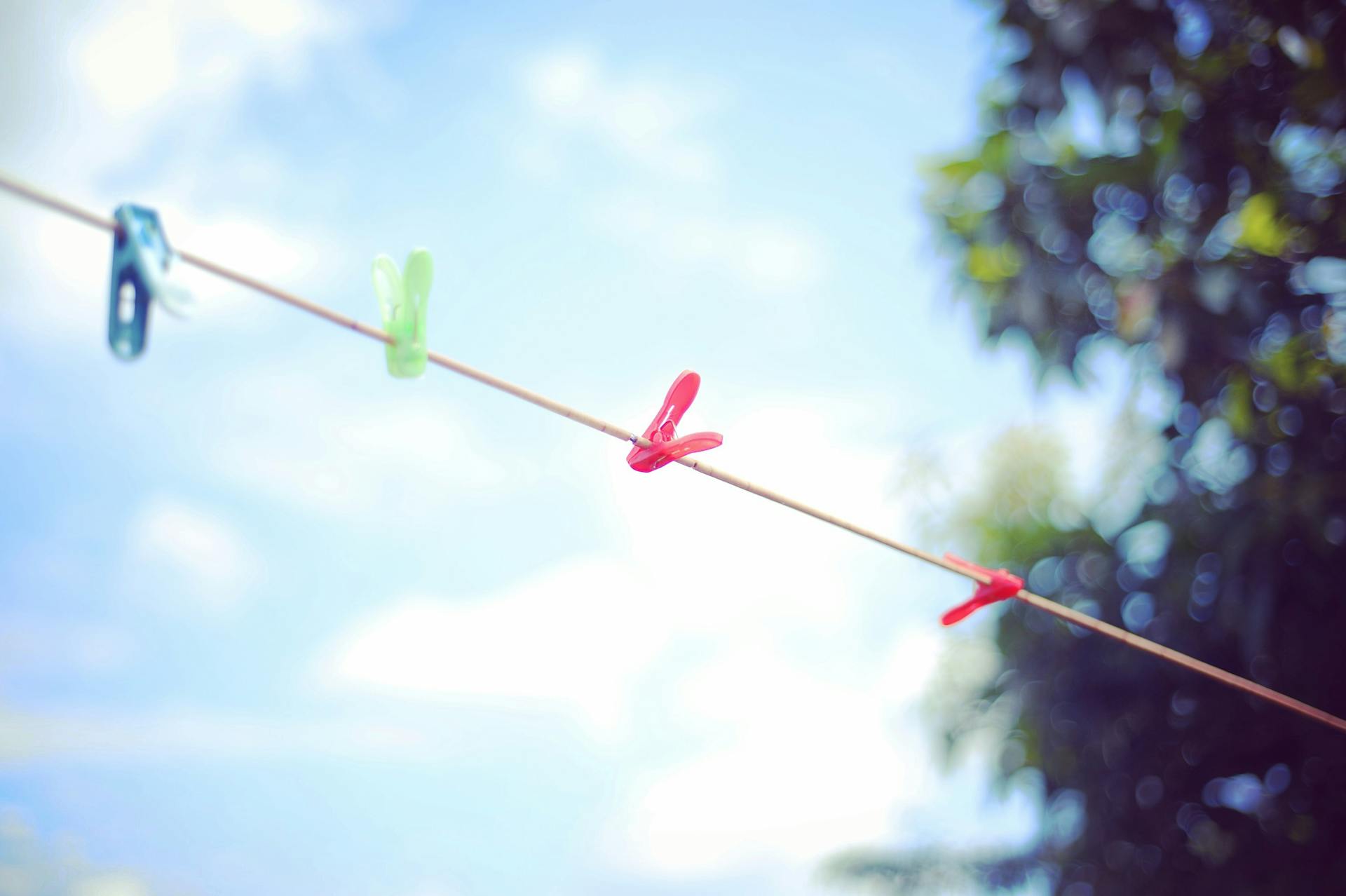
Prendedores de roupa em um varal | Fonte: Pexels
E eu? Bem, digamos que agora tenho um conjunto muito interessante de cortinas feitas de tecido de flamingo. Não desperdice, não passe vontade, certo?
Quanto a Jake, ele ficou um pouco decepcionado que os “estilingues de cueca” tinham sumido. Mas eu o assegurei que, às vezes, ser um super-herói significa manter sua cueca em segredo. E se ele alguma vez vir uma cueca gigante de flamingo voando no céu? Bem, isso é só a mamãe salvando a vizinhança, uma brincadeira ridícula de cada vez! 😉

Uma mulher olhando para cima e rindo | Fonte: Midjourney
Aqui vai outra história : eu ansiava por me tornar mãe, mas não assim. Sonolenta por outro tratamento de fertilidade fracassado, adormeci no parque e acordei com um bebê recém-nascido nos braços.
Este trabalho é inspirado em eventos e pessoas reais, mas foi ficcionalizado para fins criativos. Nomes, personagens e detalhes foram alterados para proteger a privacidade e melhorar a narrativa. Qualquer semelhança com pessoas reais, vivas ou mortas, ou eventos reais é mera coincidência e não intencional do autor.
O autor e a editora não fazem nenhuma reivindicação quanto à precisão dos eventos ou à representação dos personagens e não são responsáveis por nenhuma interpretação errônea. Esta história é fornecida “como está”, e quaisquer opiniões expressas são as dos personagens e não refletem as opiniões do autor ou da editora.



Leave a Reply